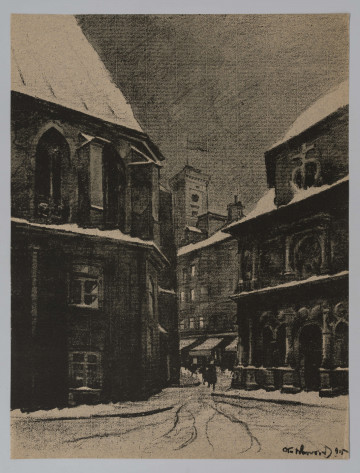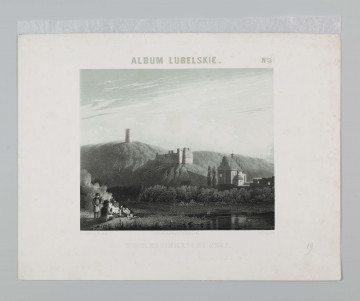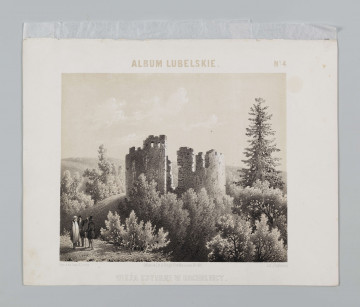
Teka Lviv - View of the town hall
1915
National Museum in Lublin
Part of the collection: Lubliniana. Painting views of Lublin and the Lublin Region
Particularly those which, in a country deprived of sovereignty, could remind us of the former splendour and significance of places important to the free and independent homeland. It was done, among other things, by means of so-called picturesque albums, popular in the 19th century, which contained engravings showing views of buildings usually accompanied by short descriptions. The first publications of this type appeared on Polish soil at the beginning of the 19th century and gained popularity in the second half of the century. Thanks to the efforts of Adam Lerue, one of the most distinguished artists in the field of inventory of Polish monuments, the monuments of Lublin Governorate also had their own album. Drawings and watercolours by Lerue, depicting the most important architectural objects, were created during the inventory of historical monuments carried out in 1844-1855 by the Delegation for the description of ancient monuments in the Kingdom of Poland, headed by Kazimierz Stronczyński. They were included in the publication Album Lubelskie [The Album of Lublin] published in 1857-1859 by the Lithographic Company of Adolf Pecq and Co. in Warsaw. The lithographic plates of the views were prepared by Julian Cegliński and Władysław Walkiewicz. Each engraving was accompanied by a caption with the name of the object, sometimes expanded by the name of the founder or a short description testifying to the "past" of the building.
The residential and defensive stone Arian Tower in Wojciechów was founded in 1520-1530 by the starost of Lublin Jan Pilecki. It owes its name to its later owners - the Spinks family, of Calvin religion, and the Orzechowskis, who turned to Arianism. A detailed description of the building was included by Stefan Żeromski in Nawracanie Judasza [The Conversion of Judas], depicting a lonely struggle of a young architect Ryszard Nienaski for a perfect world order. The protagonist's actions are symbolised by his intention to restore the former Arian church and establish a school and museum of Arianism in it. The character of Nienaski was modelled on the architect Jan Koszczyc Witkiewicz, a friend of Żeromski's, who started restoration works on the building in 1911.
Author / creator
Dimensions
cały obiekt: height: 27,2 cm, width: 36 cm
Object type
graphics
Technique
lithography
Material
paper
Creation time / dating
Creation / finding place
Owner
The National Museum in Lublin
Identification number
Location / status

1915
National Museum in Lublin

1857
National Museum in Lublin

1857
National Museum in Lublin
DISCOVER this TOPIC
National Museum in Szczecin
DISCOVER this PATH
Educational path